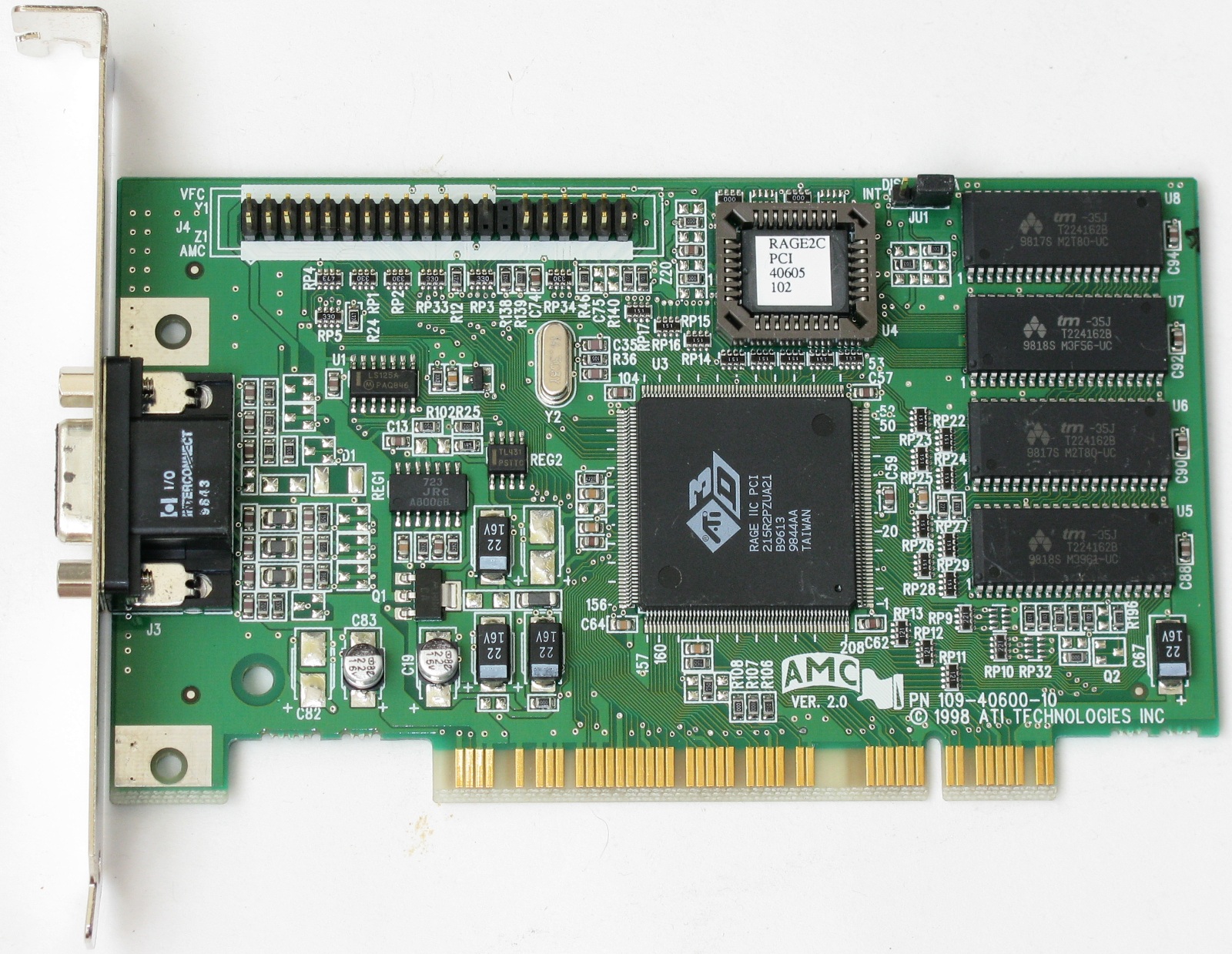Driver Rage Lt Pro Agp 215lt3ua31


ATI Rage IIc PCI card The second generation Rage (aka Mach64 GT-B) offered roughly two times greater 3D performance. Its graphics processor was based again on a re-engineered Mach64 GUI engine that provided optimal 2D performance with either single-cycle memory or high-speed. The 3D Rage II chip was an enhanced, version of the 3D Rage accelerator.
The 3D Rage LT PRO AGP was a graphics card by ATI, launched in November 1997. Built on the 350 nm process, and based on the Rage LT graphics processor, in its Rage LT. To start from bus Rage Pro fully supports AGP. With the new driver strongly optimized for. Rage Pro architecture replaced Rage II also in laptops, LT version.
The second-generation -bus compatible chip boosted 2D performance by 20 percent and added support for (DVD) playback. The chip also had driver support for Direct3D and, 3D Rave, Criterion, and Argonaut. Drivers are available for the professional 3D and community and Heidi drivers are available for users. Drivers are also provided in operating systems including,, the,, and.
ATI 3D RAGE LT PRO AGP 2X(id 132631) Free Driver Download for Windows NT4, ME, 98SE, 98, 95. World's most popular driver download site.
ATI also shipped a TV encoder companion chip for RAGE II, the ImpacTV chip. Navcoder Keygen Torrent. RAGE II was integrated into several Macintosh Computers, including the first revision of the, Power Mac 6500. In IBM-compatible PCs, several and video cards used the chipset as well including: the 3D Xpression+, the 3D Pro Turbo, and the original All-in-Wonder. The 3D Rage IIc was the last version of the Rage II core and offered optional AGP support.
The Rage IIc was integrated into one Macintosh computer, the original /233 (Rev. • Specifications for the Rage II+DVD: • 60 MHz core • up to 83 MHz SGRAM memory • 480 MB/s memory bandwidth • DirectX 5.0 3D Rage Pro [ ]. ATI Xpert@Work, PCI, 8 MB RAM ATI made a number of changes over the 3D RAGE II: a new, improvements, support and transparency implementations, support, and enhanced video playback and DVD support. The 3D Rage Pro chip was designed for 's Accelerated Graphics Port (), taking advantage of execute-mode texturing, command pipelining, sideband addressing, and full 2×-mode protocols.
Initial versions relied on standard graphics memory configurations: up to 8 of or 16 MB of, depending on the model. RAGE Pro offered performance in the range of 's and 's Voodoo accelerator, but generally failed to match or exceed its competitors.
This, in addition to its (early) lack of OpenGL support, hurt sales for what was touted to be a solid gaming solution. In February 1998, ATI introduced the 2x AGP version of the Rage Pro to the OEM market and attempted to reinvent the Rage Pro for the retail market, by simultaneously renaming the chip to Rage Pro Turbo, and releasing a new Rage Pro Turbo driver-set (4.10.2312) that supposedly increased performance by 40%. In reality, early versions of the new driver only delivered increased performance in such as ' 98 and. In games, performance actually suffered. Despite the poor introduction, the name Rage Pro Turbo stuck, and eventually ATI was able to release updated versions of the driver which granted a visible performance increase in games, however this was still not enough to garner much interest from PC enthusiasts. The 3D Rage Pro was mainly sold in the retail market as the Xpert@Work or the Xpert@Play, with the only difference being a port on the Xpert@Play version. It was also the built-in graphic chipset in the workstations, their first computer model to offer commodity PC hardware components.
It was also the built-in graphic chipset of the second revision of the. • General for the 3D Rage Pro: • 75 MHz core • 4, 8, and 16 MB 100 MHz SGRAM/WRAM memory • 800 MB/s memory bandwidth • DirectX 6.0 Rage LT and Rage LT Pro [ ]. ATI Rage LT Pro AGP, 8 MB SDRAM Rage LT (aka Mach64 LT) was often implemented on motherboards and in mobile applications like. Pdf Image Extractor Portable. Loehr - Schwartz - The_power_of_full_engagement Rar. This late 1996 chip was very similar to the Rage II and supported the same application coding. It integrated a low-voltage differential signaling () transmitter for notebook and advanced power management (block-by-block power control). The RAGE LT PRO, based on the 3D RAGE PRO, was the very first mobile GPU to use AGP. It offered Filtered Ratiometric Expansion, which automatically adjusted images to full-screen size.